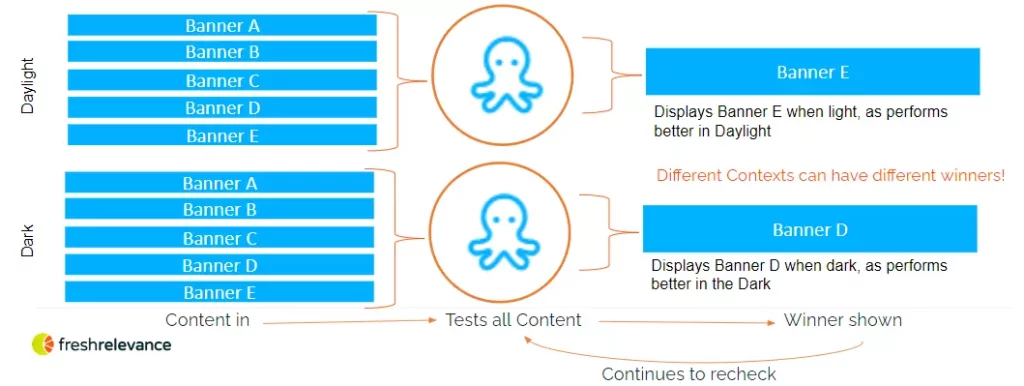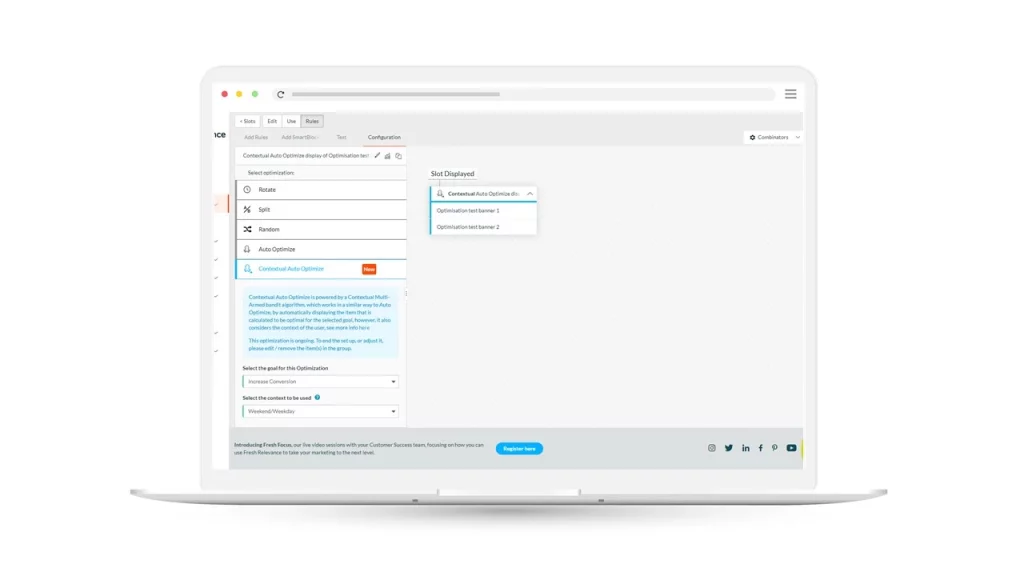We’re excited to announce a new addition to our Optimization module and an extension of Auto Optimize – Contextual Auto Optimize.
Sometimes the context of a user (such as their location or time of day) may influence which content or trigger delivers the best results, so considering context is an important part of the optimization process.
Contextual Auto Optimize automatically increases the show rate of your best performing content towards the goal that you have set, such as increasing conversion rates, but also considers the user’s context, such as time of day.
How does Contextual Auto Optimize work?
Contextual Auto Optimize creates a test for each context variable using the content that you have added.
Here is an example of a test with 5 pieces of content and the context of daylight or dark.

Contexts available in the system include:
- Daylight/Dark
- Weekend/Weekday
- Operating system
- Device type
- Country
- Number of purchases
- Number of sessions
- Day of the month
- Day of the week
- Number of products browsed
- Number of pages viewed
- Purchase price prediction

The system suggests contexts that correlate with your chosen goal, making it easy for you to choose the contexts that will have the biggest impact on optimization. In some instances, there won’t be any related contexts, in which case you can use Auto Optimize instead.
Reporting is available on multiple metrics, alongside our standard metrics, so you can clearly see what data Contextual Auto Optimize is working from and what it is doing on an ongoing basis.
How to select the right testing method
Contextual Auto Optimize is the newest way to test and optimize in the Fresh Relevance platform, alongside A/B split tests and Auto Optimize. When deciding which method of testing and optimization to choose, there are a few best practices to keep in mind. As a general rule, if you have time to review your tests and want to understand the results in greater depth, for example because the outcome may influence future designs, then A/B testing is the best method to use. However, if you’re short on time and want the best performing content to be displayed automatically, Auto Optimize is the way to go. And if you think that your visitors’ contexts may influence the outcome, Contextual Auto Optimize will work best.
Learn more
Book a demo to see Contextual Auto Optimize in action and learn more about the other features in our Testing & Optimization module.






